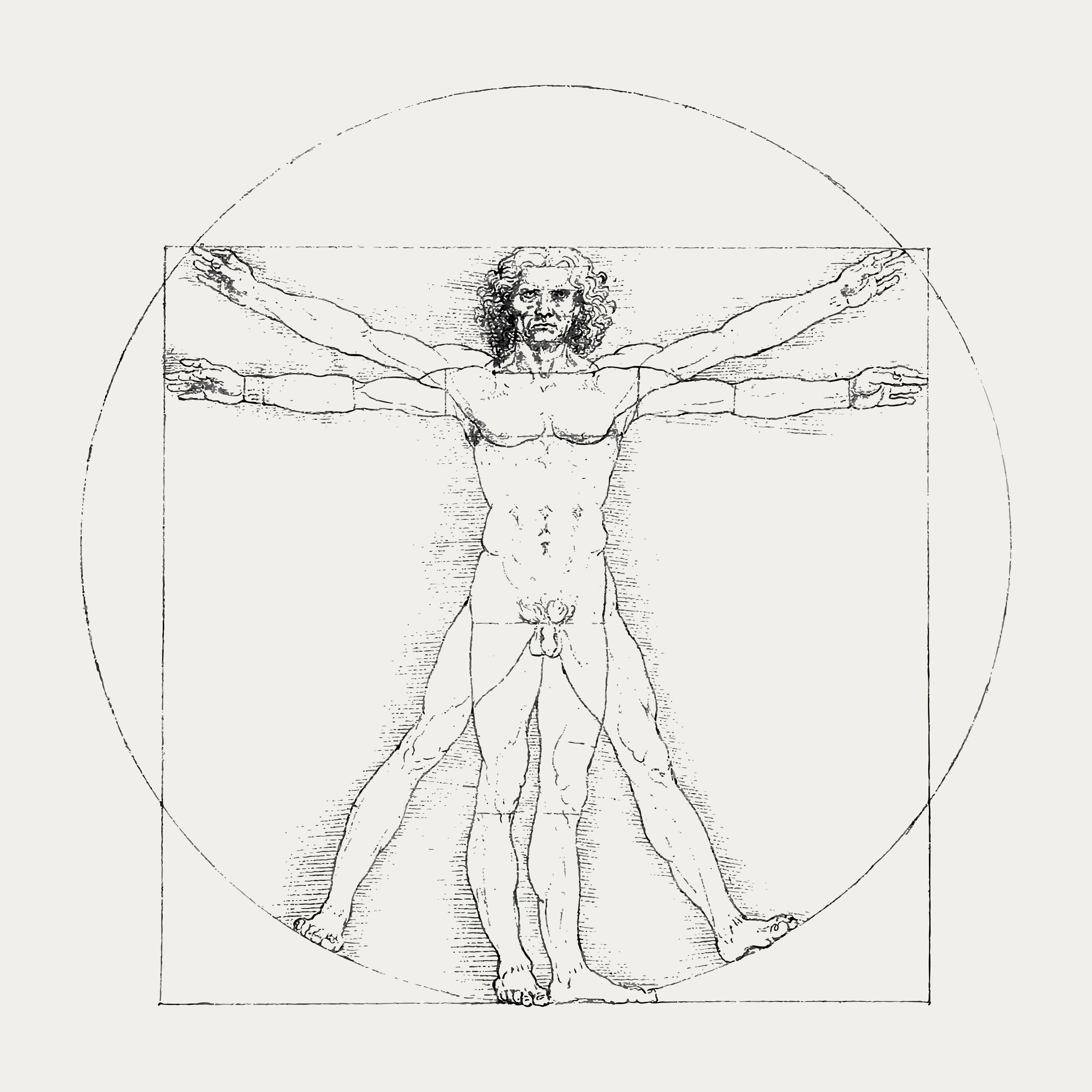
Human Anatomy: When Medicine Becomes Art
Anatomy and humans are inseparably connected. Forms and structures create fascinating images both individually and in their entirety. Known among aspiring physicians as a demanding part of their studies, human anatomy possesses an unmistakable artistic character. At the latest since Leonardo da Vinci's "Vitruvian Man" became a popular accessory on walls, it is clear: anatomy, humans, and art form a stylish triad.
Leonardo da Vinci shaped the artistic claim to the connection of medicine and human anatomy like hardly anyone else. In his estate, historians found thousands of notes and documents with anatomical drawings. Against this background, it is downright regrettable that only the aforementioned "man in a circle" achieved real popularity.
Human Anatomy as an Art Form
Anyone who wanted to be recognized as a realistic artist could not avoid the independent study of human anatomy. Before they could create creatively, they first had to become keen observers. Anyone who wanted to understand human anatomy as a doctor, on the other hand, usually sought out an artist.
In what other way would it have been possible to study human anatomy? In the Christian West, dissections of the human body were forbidden for a very long time. Artists replaced learning on dead subjects as secret anatomists with their vivid, exact representations.
Looking Beyond the Horizon
The works and sculptures of ancient times served medical students for a long time as study objects. They brought them closer to human anatomy and replaced reality on the dead body.
The connection between art and human anatomy was evident in another historical fact. Did you know that medical studies were even more comprehensive in earlier times? Students had to attend certain lectures in philosophical or cultural-historical subjects, aside from mandatory courses on human anatomy. This seems surprising at first glance.
But understanding art, philosophy, and culture was a real and additional gain for learning human anatomy as well as later work as a doctor. This valuable look beyond the horizon has unfortunately been lost in today's studies.
"Theaters" as Centers of Anatomical Teaching
Human Anatomy as a Reference Work
When deciding for or against a book, fidelity to detail within the representations surely plays the most important role for you too. Understandable, because the nomenclature of human anatomy is unchangeable. You learn it, it has been valid for centuries and is not rewritten. But it is represented differently.
One of the modern pioneers in the pictorial representation of human anatomy is Johannes Sobotta. You have certainly heard this name before. He created a book that is still in demand and of high content quality with drawings of human anatomy. Perhaps you are already studying with it. Sobotta's "Atlas of Anatomy" consists of several volumes and is considered a standard work of medicine in study and practice.
The two illustrators Karl Hajek and Erich Lepier were responsible for the representations. They transferred to paper the reality of muscles, tissues, bones, joints, and organs, perfectly dissected in the context of sections. The sketches were created three-dimensionally, color-coordinated, and perfectly formed down to the smallest detail.
The "Michelangelo of Medicine"
In the list of detailed representations of human anatomy, the name Frank Netter must not be missing. The American doctor and anatomist is often referred to as the "Michelangelo of Medicine," so accurate were his anatomical drawings.
Initially, Netter worked as an illustrator for a pharmaceutical company. As more and more doctor colleagues became aware of the quality of his images, it was decided to publish them as a book. The first edition of the Netter atlas on human anatomy appeared in 1948. Only in 1989 did Netter's recognized and award-winning "Atlas of Human Anatomy" appear, for which he was honored multiple times and received numerous honorary doctorates.
Human Anatomy as a Work of Art
The selection is large, every specialty is represented. Anatomical representations are timeless. They connect the history and future of human anatomy and medicine. And they create a unique bridge between human anatomy and art.
- The anatomy of humans and the various organs, bones, and muscles
- Medical drawings with correct nomenclature, perfect for learning and explaining
- Unique vintage anatomy posters for interior design for practices and homes
Take a look now at all images of human anatomy.
Share
